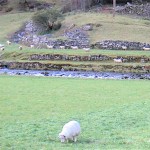by Catherine Haug (April 6, 2010; updated Feb 9, 2011)
Recent polls indicate most shoppers consider “Natural” to be better (more healthful) than “Organic.” If this is also your opinion, you’re in for a shock. Check out this 4 minute video from the Cornucopia Institute, comparing ‘Natural’ boxed cereals and granola with Organic: Natural vs Organic Cereal.
- ‘Organic’ is a certified and verified by the USDA, with rules governing it’s use;
- ‘Natural’ can be used without any certification and on any product, there are no rules governing its use, and there is no verification by anyone that the statement is true. ‘Natural’ food products can be contaminated with pesticides, herbicides and other toxic chemicals.
So between these two choices on similar products, you’d be better off with the ‘Organic’ label than the ‘Natural’ label. That is, unless the ‘Natural’ grower/producer is local and you can verify his methods.
You can view a video from NBC’s Today Show, discussing food labeling at Food For Thought: Understanding Labels (aired March 26, 2010).
See also related ESP posts: Report on Organic Eggs (2010) and Eggs: A Buyer’s Guide.
The Organic Label
Single-ingredient foods such as produce and eggs have only one label, “Organic.”
But things get confusing when the food has more than one ingredient (processed food and pasteurized dairy products). There are three different levels of “Organic” (From the Certified Organic Label Guide): (more…)

